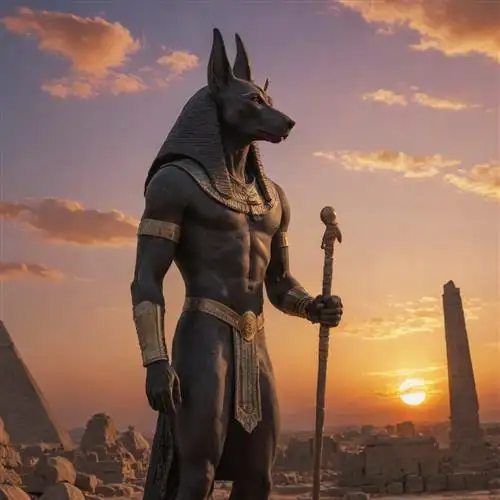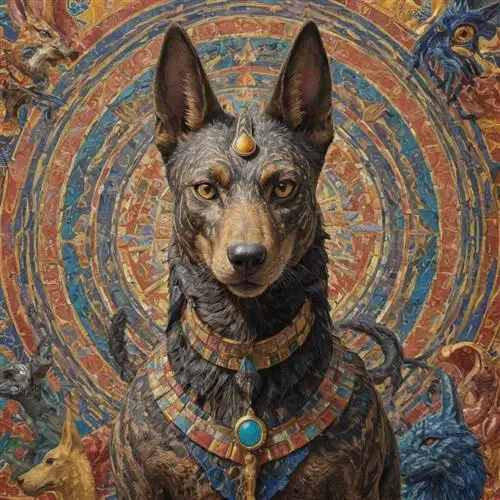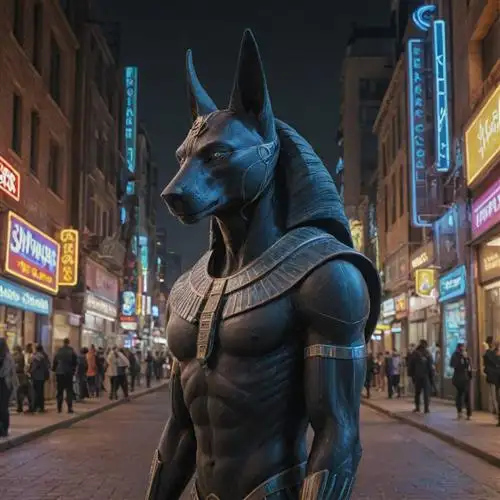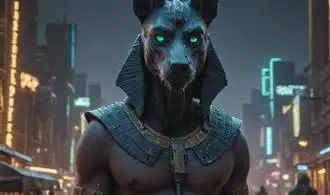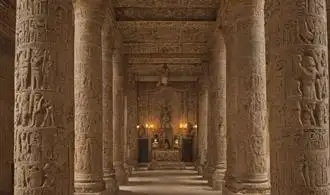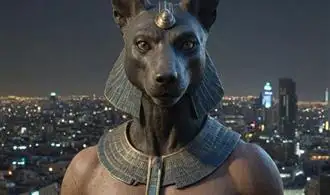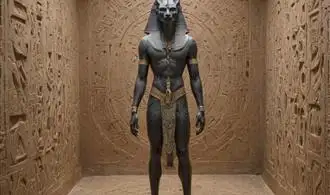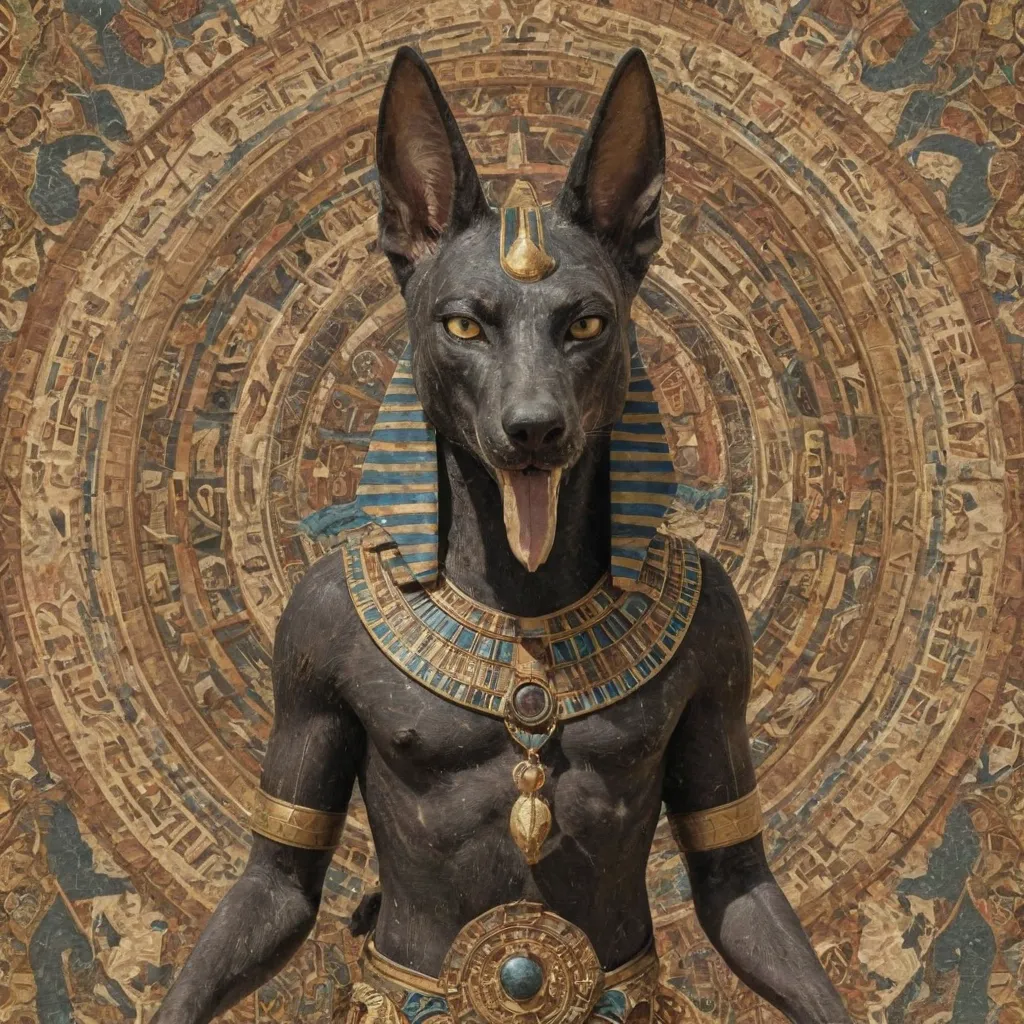
The Origins of Anubis Symbolism
Anubis, the jackal-headed Egyptian deity, has long been a subject of fascination for scholars and enthusiasts alike. Tracing the origins of Anubis' symbolism unveils a rich tapestry of ancient beliefs and cultural influences that have endured through the ages. Anubis' role as the god of mummification and the afterlife is deeply rooted in the early dynastic period of ancient Egypt, where the jackal was revered as a sacred animal associated with the necropolis and the realm of the dead.
One of the key aspects of Anubis' symbolism is the jackal's physical characteristics and its connection to the transition between the world of the living and the realm of the dead. Jackals, known for their scavenging behavior, were often observed near burial sites, leading the ancient Egyptians to believe that these creatures had a special affinity with the deceased and the underworld. This association with the necropolis and the process of mummification solidified Anubis' position as the guardian of the dead, responsible for the preservation and safe passage of the deceased into the afterlife.
Moreover, the jackal's keen senses and ability to navigate the darkness were seen as metaphors for Anubis' role in guiding the dead through the treacherous journey of the underworld. The jackal's black fur, which was believed to symbolize the fertile soil of the Nile Valley, further reinforced the deity's connection to the cycle of life, death, and rebirth – a core principle in ancient Egyptian mythology.
Interestingly, the origins of Anubis' symbolism can be traced to even earlier periods of Egyptian history, where the jackal-headed god was known by different names and associated with various regional deities. The unification of Upper and Lower Egypt during the Early Dynastic Period brought about the amalgamation of these regional beliefs, ultimately leading to the emergence of Anubis as a unified and prominent figure in the Egyptian pantheon.
The Role of Anubis in Mummification and the Afterlife
Anubis, the jackal-headed Egyptian deity, was a pivotal figure in the mummification process and the afterlife journey of the deceased. As the god of embalming, Anubis played a crucial role in ensuring the proper preservation of the body, a vital step in the ancient Egyptian belief system. During the mummification ritual, Anubis would oversee the entire process, from the removal of the internal organs to the wrapping of the body in linen bandages. This meticulous attention to detail was essential, as the Egyptians believed that the physical form must be intact for the deceased to transition successfully into the afterlife.
The role of Anubis extended beyond the mummification rite. As the guardian of the necropolis and the protector of the dead, Anubis was responsible for guiding the deceased through the perilous journey to the afterlife. In the famous "weighing of the heart" ceremony, Anubis would stand by the scales, carefully monitoring the balance between the deceased's heart and the feather of truth. This critical moment determined whether the individual was worthy of entering the realm of the gods, or if their soul would be condemned to eternal damnation.
Anubis' significance in the afterlife was further cemented by his association with the embalming process. The Egyptians believed that the physical body was a vessel for the soul, and by preserving it through mummification, the deceased could maintain their identity and continue their existence in the afterlife. Anubis, as the god of embalming, ensured that this crucial link between the physical and the spiritual realms was maintained, guiding the dead through the transition to the next life.
The The Unusual Insight Into the Symbolism of Anubis explores the deeper meanings and symbolism behind Anubis' role in Egyptian mythology, shedding light on the profound connection between the physical and spiritual realms in ancient Egyptian beliefs.
Anubis as the Guardian of the Necropolis
Anubis, the ancient Egyptian god with the head of a jackal, held a crucial role as the guardian of the necropolis, the sacred city of the dead. This esteemed position endowed Anubis with immense power and responsibility, making him a central figure in the complex rituals and beliefs surrounding death and the afterlife in ancient Egyptian culture.
As the guardian of the necropolis, Anubis was tasked with overseeing the crucial process of mummification, ensuring the dead were properly prepared for their journey to the afterlife. He was present at the weighing of the heart ceremony, where the deceased's heart was weighed against the feather of truth, determining their worthiness to enter the afterlife. Anubis's presence during this ceremony symbolized his role as the gatekeeper, guiding the souls of the dead through the treacherous passage to the realm of the afterlife.
The necropolis, under Anubis's watchful eye, served as the sacred resting place for the deceased. These vast necropolises, such as the famous Valley of the Kings, were meticulously designed and constructed to provide the dead with the necessary provisions and protections for their eternal existence. Anubis was believed to patrol these hallowed grounds, ensuring the safety and sanctity of the tombs and their occupants.
The jackal-headed god's association with the necropolis also extended to his role as the protector of the deceased's physical remains. Anubis was responsible for the mummification process, a complex and intricate ritual that preserved the body for the afterlife. By carefully removing the organs, drying the body, and wrapping it in linen, Anubis ensured the deceased would be ready to embark on their journey to the afterlife.
The Jackal-Headed God and His Animal Symbolism
Anubis, the ancient Egyptian god with the head of a jackal, holds a profound significance in the pantheon of Egyptian mythology. This enigmatic deity is intrinsically linked to the symbolism of his animal counterpart, the jackal, and the deeper meanings it carries within the rich tapestry of Egyptian culture and beliefs.
Jackals were often seen prowling the deserts and necropolis areas of ancient Egypt, and this association with the liminal spaces between life and death contributed to Anubis' role as the god of embalming and the protector of the dead. The jackal's keen senses and ability to navigate the shifting sands of the desert were seen as qualities that made it the perfect guide for the deceased on their journey to the afterlife.
Furthermore, the jackal's distinctive black fur and pointed ears were also significant in Anubis' iconography. The color black was symbolic of the fertile soil of the Nile River, as well as the color of the decomposing body, alluding to the god's role in the embalming and mummification process. The pointed ears of the jackal were believed to enhance Anubis' ability to hear the prayers and pleas of the dead, allowing him to guide them through the afterlife with compassion and wisdom.
Interestingly, the jackal was not the only animal associated with Anubis. In some instances, the god was depicted with the head of a dog or a wolf, further blurring the lines between these canine-like creatures and their symbolic significance. This fluidity in Anubis' animal representation speaks to the complex and multifaceted nature of the deity, whose role extended beyond the boundaries of a single animal form.
The jackal's association with Anubis also extends to the god's role as the weigher of souls. In the famous scene of the "Weighing of the Heart" from the Book of the Dead, Anubis is depicted overseeing the crucial process of determining the worthiness of the deceased's soul. The jackal's keen senses and ability to discern truth from falsehood were believed to make Anubis the perfect guardian of this sacred rite, ensuring the deceased's successful transition to the afterlife.
Anubis and the Weighing of the Heart Ceremony
The Weighing of the Heart Ceremony, also known as the Psychostasia, was a pivotal ritual in ancient Egyptian mythology, and Anubis played a central role in this sacred process. As the god associated with embalming and the afterlife, Anubis was responsible for guiding the deceased through the final judgment, ensuring their worthiness to enter the eternal realm.
During the Weighing of the Heart Ceremony, the heart of the deceased was weighed against the feather of truth, representing the goddess Ma'at and the concept of justice, morality, and cosmic order. Anubis, the jackal-headed deity, would meticulously oversee this crucial moment, carefully monitoring the balance of the scales to determine the individual's moral standing.
If the heart was found to be pure and free of sin, it would be deemed worthy, and the deceased would be granted passage to the afterlife. However, if the heart was found to be heavier, tainted by misdeeds and transgressions, it would be devoured by the devourer, a monstrous creature with the body of a hippopotamus and the head of a crocodile or lion. This fate condemned the individual to oblivion, forever barred from the realm of the gods.
The significance of Anubis in this ceremony cannot be overstated. As the god responsible for the embalming process, Anubis was intimately familiar with the human body and its inner workings. His keen observational skills, combined with his role as the guide to the afterlife, made him the perfect deity to oversee the Weighing of the Heart Ceremony.
Moreover, Anubis was revered for his impartiality and objectivity, ensuring that the judgment was fair and just. His presence during this ritual was a testament to the importance of morality, ethics, and personal accountability in ancient Egyptian belief systems.
The Enduring Legacy of Anubis in Modern Symbolism
Anubis, the jackal-headed Egyptian god, maintains a powerful presence in contemporary symbolism and culture. Far from being relegated to the ancient past, this enigmatic deity's influence has transcended the boundaries of time, permeating various aspects of modern life. From the realms of mythology and spirituality to the worlds of art, media, and even merchandise, Anubis' symbolism continues to captivate and inspire individuals across the globe.
One of the most striking examples of Anubis' enduring legacy can be found in the realm of popular culture. The god's striking iconography and mythological significance have made him a frequent subject in films, television shows, and comic books. In the blockbuster film "The Mummy," Anubis' iconic figure is prominently featured, serving as a tangible link between the ancient Egyptian pantheon and contemporary narratives. Similarly, the god's image has become a staple in various fantasy and science-fiction franchises, where his association with the afterlife and the underworld lends a sense of mysticism and otherworldliness to the stories.
Beyond the realm of entertainment, Anubis' symbolism has also found its way into the world of art and design. Contemporary artists have embraced the god's striking visual representation, incorporating it into their work to evoke themes of mortality, transition, and the mysteries of the afterlife. In the realm of tattoo art, Anubis has become a popular choice, with individuals adorning their bodies with the god's likeness as a means of honoring their connection to ancient Egyptian culture or expressing their personal beliefs and spiritual inclinations.
The enduring appeal of Anubis can also be observed in the realm of modern spirituality and alternative belief systems. Various neo-pagan and Wiccan traditions have incorporated Anubis into their pantheons, recognizing the god's associations with death, the underworld, and the process of transformation. This integration has led to a renewed interest in Anubis' symbolism, with practitioners seeking to connect with the deity's energy and incorporate it into their spiritual practices.
Furthermore, the commercial sector has not been immune to Anubis' influence. The god's image can be found adorning a wide range of merchandise, from clothing and jewelry to home decor and collectibles. This phenomenon reflects the broader public fascination with ancient Egyptian culture and the continued relevance of Anubis' symbolism in the modern world.
Artistic Interpretations of Anubis Throughout History
The artistic interpretations of Anubis, the ancient Egyptian jackal-headed god, have captivated the imagination of artists, historians, and enthusiasts alike throughout history. From the grand monuments of ancient Egypt to the contemporary depictions in popular culture, the symbolism and imagery surrounding Anubis have evolved, reflecting the enduring fascination with this enigmatic deity.
In ancient Egypt, Anubis was often portrayed as a jackal-headed figure, a representation that was believed to symbolize his role as the guardian of the dead and the embalming process. Statues and reliefs depicting Anubis were found in tombs and temples, where he was revered as a crucial figure in the afterlife journey of the deceased. The attention to detail and the artistic mastery displayed in these ancient depictions showcase the importance of Anubis in the Egyptian pantheon.
As the centuries passed, the artistic interpretations of Anubis expanded beyond the traditional jackal-headed form. In the Greco-Roman period, Anubis was sometimes portrayed with a human body and a jackal head, blending the divine and the mortal in a captivating manner. This hybrid representation highlighted the dual nature of Anubis, who was both a celestial being and a guide for the departed souls.
In the modern era, the symbolism of Anubis has continued to resonate with artists and designers, who have reinterpreted the ancient god in a multitude of ways. From the stark, minimalist depictions in contemporary art to the intricate, fantasy-inspired renditions in popular culture, Anubis has become a versatile and enduring icon. Daring Anubis Rituals That Will Blow Your Mind have also contributed to the enduring fascination with this ancient Egyptian deity.



